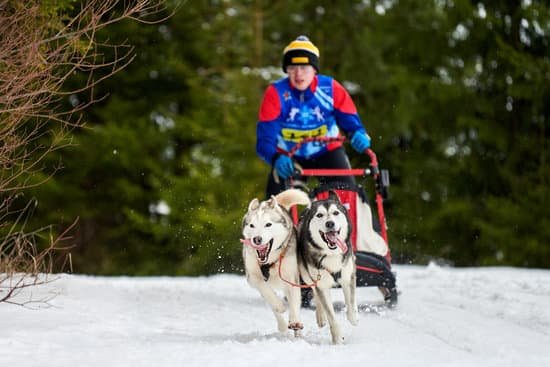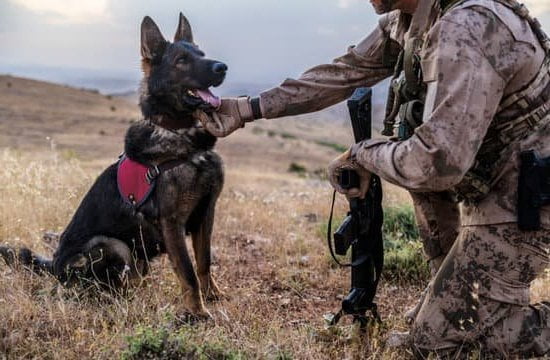Crate training is an essential aspect of raising a well-behaved and well-adjusted Boxer dog. In this article, we will explore the key steps and tips on how to crate train a Boxer dog effectively. Crate training provides numerous benefits for both your furry friend and you, such as facilitating house training, providing a safe space for your dog, and aiding in travel or vet visits.
Boxers are known for their energetic and playful nature, making crate training especially important to channel their energy appropriately. By understanding the importance of crate training for Boxer dogs, you can create a positive environment where your pet feels secure and comfortable in their own space. With the right approach and consistency, crate training can become a positive experience for both you and your Boxer.
Choosing the right crate for your Boxer is crucial in ensuring their comfort and safety during the training process. Factors such as size, material, and features play a significant role in creating an inviting space for your furry companion. By following these guidelines and setting up the crate properly, you can set the stage for successful crate training with your Boxer.
Choosing the Right Crate for Your Boxer
When it comes to crate training your Boxer, one of the key aspects to consider is choosing the right crate for your furry friend. The crate serves as a safe and comfortable space for your Boxer, providing them with a sense of security and a designated area to rest. Here are some factors to keep in mind when selecting a crate:
- Size: It’s essential to choose a crate that is large enough for your Boxer to stand up, turn around, and lie down comfortably. A crate that is too small can make your dog feel confined and uncomfortable.
- Material: Crates are typically available in plastic, wire, or collapsible fabric options. Consider your Boxer’s preferences – some dogs may prefer the visibility of a wire crate while others may feel more secure in an enclosed plastic crate.
- Features: Look for crates with features that cater to your Boxer’s needs, such as removable trays for easy cleaning, doors on multiple sides for convenient access, and secure latches to prevent escape attempts.
Properly selecting a crate that meets your Boxer’s specific requirements will set the foundation for successful crate training. Once you have chosen the right crate, it’s essential to set it up in a welcoming and cozy manner.
- Comfortable bedding: Line the bottom of the crate with soft bedding or blankets to create a comfortable resting area for your Boxer.
- Toys and chews: Provide your Boxer with toys or chews to keep them entertained while in the crate and help alleviate boredom.
- Crate placement: Find a suitable location in your home where the crate can be placed without disturbances, ensuring that it remains a peaceful retreat for your Boxer.
By carefully considering these aspects when choosing and preparing the crate, you can create a positive environment that will help facilitate successful crate training for your beloved Boxer.
Preparing the Crate
Crate training a Boxer dog is an essential part of their overall development and well-being. One crucial aspect of this process is setting up the crate to be a comfortable and inviting space for your furry friend. When your Boxer sees the crate as a safe haven rather than a place of confinement, they are more likely to adapt positively to crate training.
To prepare the crate for your Boxer, start by choosing the right size that allows them to stand up, turn around, and lie down comfortably. The material of the crate is also important – opt for durable materials like plastic or metal that can withstand your dog’s chewing tendencies. Consider adding a soft bedding or blanket inside the crate to make it cozy and warm for your Boxer.
In addition to physical comfort, it’s important to make the crate an appealing space for your Boxer. Place some of their favorite toys or blankets inside to create a familiar environment. You can also include items with your scent, like an old t-shirt, to provide reassurance while your Boxer adjusts to their new surroundings. By making the crate a pleasant place for your Boxer, you are helping them associate positive feelings with their designated area.
| Aspect | Tips |
|---|---|
| Crate Size | Choose a size that allows standing, turning, and lying down comfortably. |
| Crate Material | Opt for durable materials like plastic or metal. |
| Comfort Items | Add soft bedding or blankets along with favorite toys inside the crate. |
Introducing Your Boxer to the Crate
When introducing your Boxer to the crate, do not force them inside or close the door immediately. Instead, allow them to explore the crate at their own pace. You can start by placing some treats or their favorite toys inside the crate to encourage them to go in voluntarily.
Positive reinforcement is key in this process – praise and reward your Boxer whenever they show interest in the crate or enter it willingly. This will help create a positive association with the crate and make them feel more comfortable inside.
It’s also essential to keep initial crate sessions short and gradually increase the time spent inside. Begin by closing the door for just a few seconds while your Boxer is inside, then gradually extend this period as they become more relaxed.
Remember that patience is key when introducing your Boxer to the crate – every dog is different, so it may take some time for them to feel completely at ease with this new environment. By following these tips and being consistent in your approach, you can successfully teach your Boxer how to crate train in a positive and effective manner.
| Boxer Crate Training Tip | Benefits |
|---|---|
| Use positive reinforcement | Creates a positive association with the crate |
| Start slow and gradually increase time in crate | Helps build comfort and confidence |
| Place treats or toys inside the crate | Encourages voluntary exploration of the space |
Feeding and Treats in the Crate
Feeding and treats play a crucial role in crate training a Boxer dog. It is essential to use positive reinforcement to create a positive association between your Boxer and the crate. One effective way to do this is by using your Boxer’s meals as an opportunity for crate training. By feeding your Boxer in the crate, you are reinforcing the idea that the crate is a safe and comfortable space.
When starting feeding sessions in the crate, make sure to place the food bowl towards the back of the crate. This encourages your Boxer to enter fully into the crate, gradually making them more comfortable with going inside. Additionally, you can use treats as rewards for entering and staying in the crate. Treats should be given immediately after your Boxer follows your cue to enter or when they display calm behavior while inside.
It is important to only provide meals and treats in the crate during training sessions initially. This helps create a strong association between positive experiences and being in the crate. Over time, as your Boxer becomes more comfortable with being crated, you can start transitioning to occasional treats given outside of training sessions as well. Consistency and patience are key when using feeding and treats as reinforcement for crate training a Boxer dog.
Crate Training Schedule
Start With Short Intervals
When you first begin crate training your Boxer, it’s important to start with short intervals of time spent in the crate. Begin by encouraging your dog to enter the crate voluntarily using treats or toys. Keep the door open initially so they can come and go as they please.
Gradually increase the amount of time they spend inside the crate, building up their tolerance over time. This gradual approach will help prevent any feelings of anxiety or stress associated with being confined.
Establishing a Routine
Creating a consistent schedule for your Boxer’s crate training will help them know what to expect throughout the day. Aim to have designated times for feeding, playtime, bathroom breaks, and nap time in the crate.
Dogs thrive on routine and structure, so following a regular schedule will contribute to successful crate training. Make sure to stick to set times for when your Boxer enters their crate and when they are let out, ensuring they understand what is expected of them each day.
Consistency and Patience
Consistency and patience are essential when establishing a crate training schedule for your Boxer dog. It’s normal for there to be some resistance or reluctance in the beginning stages of training, but remain firm yet gentle in your approach.
By consistently following the established routine and being patient with your furry companion, you can help them feel safe and secure in their crate over time. Remember that every dog is different, so be prepared to adjust the schedule as needed based on your Boxer’s individual needs and progress in their training journey.
Dealing With Whining and Barking
Understanding the Reasons Behind Whining and Barking
When crate training a Boxer dog, it is common for them to exhibit whining and barking behaviors, especially in the initial stages of training. It’s crucial to understand that these vocalizations may stem from anxiety, fear, frustration, or simply a desire for attention. By recognizing the underlying reasons behind your Boxer’s whining or barking, you can tailor your approach to address their specific needs effectively.
Implementing Desensitization Techniques
One effective strategy for dealing with whining and barking during crate training is desensitization. Gradually exposing your Boxer to the crate in short intervals throughout the day can help them become accustomed to being inside without triggering anxious behaviors. Start by placing treats or favorite toys inside the crate and encouraging your Boxer to enter voluntarily. Over time, increase the duration of their stay inside the crate while ensuring they remain calm and relaxed.
Responding Appropriately to Vocalizations
When your Boxer starts whining or barking in the crate, it’s essential to respond calmly and avoid reinforcing negative behavior with attention or punishment. Instead, wait for a moment of silence before offering praise or rewarding them with treats for being quiet.
This positive reinforcement will help your Boxer associate silence with desirable outcomes, gradually reducing their reliance on vocalizations as a means of communication. Remember to be patient and consistent in your approach to effectively address whining and barking during crate training.
By understanding the reasons behind vocalizations, implementing desensitization techniques, and responding appropriately to whining and barking behaviors during crate training, you can help your Boxer develop positive associations with their crate over time. Patience, consistency, and positive reinforcement are key elements in guiding your Boxer towards successful crate training habits while strengthening your bond with them through this training process.
Gradual Crate Training Progress
Crate training a Boxer dog is an essential part of their overall obedience and behavior. As your Boxer becomes more comfortable with the crate, it is crucial to monitor their progress and make adjustments as needed to ensure successful training. Here are some tips on how to gradually progress with crate training for your Boxer:
- Slowly increase crate time: Start by leaving your Boxer in the crate for short periods while you are at home. Gradually extend the time they spend in the crate, making sure to give them breaks for bathroom breaks, exercise, and playtime.
- Monitor behavior: Pay attention to how your Boxer reacts when in the crate. Look for signs of anxiety or distress, such as excessive whining, barking, or destructive behavior. If you notice any negative behaviors, consider if adjustments need to be made to make the crate more inviting and comfortable.
- Practice positive reinforcement: Continue to use treats, toys, and praise to encourage your Boxer to associate the crate with positive experiences. Reward calm behavior inside the crate and avoid letting them out when they are whining or barking excessively.
As your Boxer progresses with their crate training, remember that each dog is unique and may require different approaches. Be patient and consistent in your training efforts, making adjustments as needed to help your Boxer become more comfortable with their crate. By monitoring their progress closely and adapting the training process accordingly, you can set them up for long-term success with crate training.
Troubleshooting Common Crate Training Challenges
Crate training a Boxer dog can be a rewarding experience, but it is not without its challenges. Some Boxers may resist being confined in a crate initially, leading to whining, barking, or even attempts to escape. However, with patience and consistency, these challenges can be overcome.
One common issue that owners may encounter is separation anxiety when crating their Boxer. This can manifest as whining, barking, or destructive behavior when left alone in the crate. To address this challenge, it is important to gradually increase the duration that your Boxer spends in the crate while you are away. Start with short periods of time and gradually extend the duration as your Boxer becomes more comfortable being alone.
Another common problem during crate training is fear or discomfort with the crate itself. This could be due to the size of the crate being too small, the material causing discomfort, or simply a lack of familiarity with the space.
To address this issue, ensure that you have chosen an appropriate-sized crate for your Boxer and make the space inviting by adding familiar bedding or toys inside. Additionally, spend time acclimating your Boxer to the crate by using positive reinforcement techniques such as feeding meals or offering treats inside the crate.
Lastly, some Boxers may exhibit resistance to entering the crate voluntarily. In such cases, it is important not to force your dog into the crate as this can create negative associations with confinement. Instead, use enticing treats or toys to encourage your Boxer to willingly enter the crate on its own. Consistency and patience are key when facing challenges like this during crate training.
By understanding how to address common obstacles in crate training a Boxer dog and implementing strategies tailored to your individual dog’s needs, you can create a positive association with the crate and help your furry friend become comfortable and secure in their own special space.
Reinforcing Crate Training Habits
Crate training a Boxer dog is a crucial aspect of their overall behavior and well-being. By introducing your Boxer to crate training, you are providing them with a safe and comfortable space that can help reduce anxiety and promote good behavior. However, the key to successful crate training lies in reinforcing positive associations with the crate for long-term success.
To maintain a positive association with the crate, it is essential to continue using positive reinforcement techniques throughout your Boxer’s training journey. This includes rewarding good behavior, such as going into the crate voluntarily or staying calm while inside, with treats and praise. By consistently reinforcing these positive behaviors, your Boxer will learn to see the crate as a welcoming and secure environment.
Additionally, consistency is key when it comes to reinforcing crate training habits. Stick to a regular schedule for feeding, walks, and crate time to help your Boxer adjust to their new routine.
Be patient and understanding during this process, as every dog learns at their own pace. With dedication and the right approach on how to crate train a Boxer dog, you can ensure that your furry friend develops healthy habits and feels comfortable in their designated space for years to come.
Frequently Asked Questions
Can Boxers Be Crate Trained?
Yes, Boxers can be crate trained. In fact, crate training is often recommended for Boxers as it provides them with a safe and secure space to rest and relax. It also helps with house training and prevents destructive behavior.
How Long Can a Boxer Stay in a Crate?
A Boxer can typically stay in a crate for about 4 to 6 hours at a time, depending on their age and individual needs. Puppies may need more frequent breaks to go potty, while adult Boxers can hold it longer.
What Size Crate Does a Boxer Need?
The size of the crate needed for a Boxer depends on their size and weight. Generally, a large or extra-large crate is suitable for most adult Boxers to allow them ample space to stand up, turn around, and lie down comfortably. It’s important not to get a crate that is too small for them to move around freely.

Welcome to the blog! I am a professional dog trainer and have been working with dogs for many years. In this blog, I will be discussing various topics related to dog training, including tips, tricks, and advice. I hope you find this information helpful and informative. Thanks for reading!





